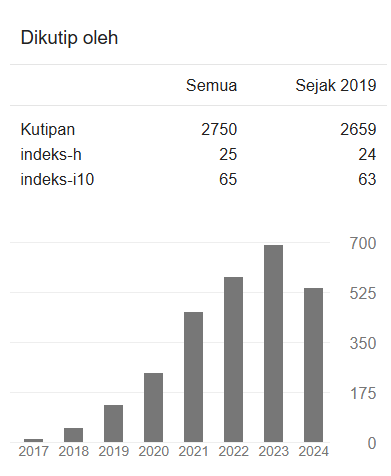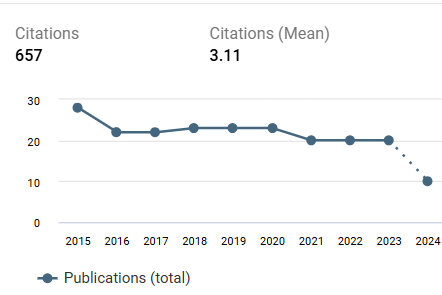Pembelajaran Kooperatif Tipe STAD Dengan Pendekatan Pengajuan Soal Pada Materi Peluang di SMK Negeri 2 Kediri
DOI:
https://doi.org/10.22219/jinop.v1i2.2572Abstract
Abstrak
Pelajaran matematika bagi sebagian siswa merupakan pelajaran yang sulit, tidak menyenangkan atau kadang menakutkan, sehingga siswa tidak termotivasi untuk belajar matematika secara mendalam. Siswa perlu diberikan suatu tugas dimana siswa sendiri yang akan membuat soal dan menyelesaikannya sendiri, sehingga soal yang mereka buat dan selesaikan menjadi soal yang lebih bermakna bagi mereka. Salah satu model pembelajaran yang digunakan untuk mencapai hasil yang diinginkan adalah pembelajaran kooperatif tipe STAD dengan pendekatan pengajuan soal.
Tujuan dari penelitian adalah untuk menghasilkan perangkat pembelajaran kooperatif tipe STAD dengan pendekatan pengajuan soal yang baik untuk materi teori peluang dan mendeskripsikan keefektifan pembelajaran kooperatif tipe STAD dengan pendekatan pengajuan soal pada materi teori peluang. Penelitan ini dilakukan dengan jenis pengembangan dengan data diperoleh melalui angket, observasi dan tes. Semua data dianalisis secara deskriptif.
Hasil penelitian menunjukkan bahwa (1) dengan mengadopsi kesembilan unsur model desain sistem pembelajaran Kemp, diperoleh perangkat pembelajaran kooperatif tipe STAD dengan pendekatan pengajuan soal yang baik yaitu memenuhi kriteria valid, praktis dan efektif pada materi peluang, (2) pembelajaran kooperatif tipe STAD dengan pendekatan pengajuan soal efektif untuk mengajarkan materi peluang di SMKN 2 Kediri karena memenuhi empat indikator yaitu ketuntasan hasil belajar secara klasikal sebesar 87%, aktivitas siswa untuk setiap kategori berada dalam kriteria waktu ideal, respons siswa positif, dan nilai rata-rata kemampuan guru mengelola pembelajaran untuk setiap RPP berkategori baik dan sangat baik.
Kata Kunci: kooperatif tipe STAD, pengajuan soal, teori peluang.
Abstract
Mathematics for some students is a difficult subject, unpleasant or scary sometimes, so that students are not motivated to learn mathematics in depth. Students need to be given an assignment in which the students themselves who will create their own problems and solve them, so that they make matter and resolve the matter more meaningful for them. One model of learning that is used to achieve the desired result is STAD cooperative learning with problem posing approach. This research was conducted with the type of development with the data obtained through questionnaires , observations and tests . All data were analyzed descriptivelyThe purpose of the research is to produce devices STAD cooperative learning with problem posing approach about the probability theory is good and effectiveness of STAD cooperative learning with problem posing approach about the probability theory.
The results showed that ( 1 ) by adopting the nine elements of the design model of learning systems Kemp , produce device the STAD cooperative learning with problem posing approach that is good meets the criteria of a valid , practically and effective on opportunities theory , ( 2 ) the STAD cooperative learning with problem posing approach effective for teaching about probability theory at SMK 2 Kediri because it meets the four indicators , namely mastery of learning outcomes in the class is 87 % , the activity of students for each category within the ideal time criteria , student response is positive, and the average value of the teacher 's ability to manage the learning each lesson plan categorized well and very well .
Keywords: the STAD cooperative learning, problem posing, probability
Downloads
Downloads
Published
How to Cite
Issue
Section
License
Copyright Notice
Authors who publish with JINoP (Jurnal Inoasi Pembelajaran) agree to the following terms:
- For all articles published in the JINoP (Jurnal Inovasi Pembelajaran), copyright is retained by the authors. Authors give permission to the publisher to announce the work with conditions. When the manuscript is accepted for publication, the authors agree to the automatic transfer of the publishing right to the publisher.
- Authors retain copyright and grant the journal the right of first publication with the work simultaneously licensed under a Creative Commons Attribution 4.0 International License. that allows others to share the work with an acknowledgment of the work's authorship and initial publication in this journal.
- Authors are able to enter into separate, additional contractual arrangements for the non-exclusive distribution of the journal's published version of the work (e.g., post it to an institutional repository or publish it in a book), with an acknowledgment of its initial publication in this journal.
- Authors are permitted and encouraged to post their work online (e.g., in institutional repositories or on their website) prior to and during the submission process, as it can lead to productive exchanges, as well as earlier and greater citation of published work (See The Effect of Open Access).








